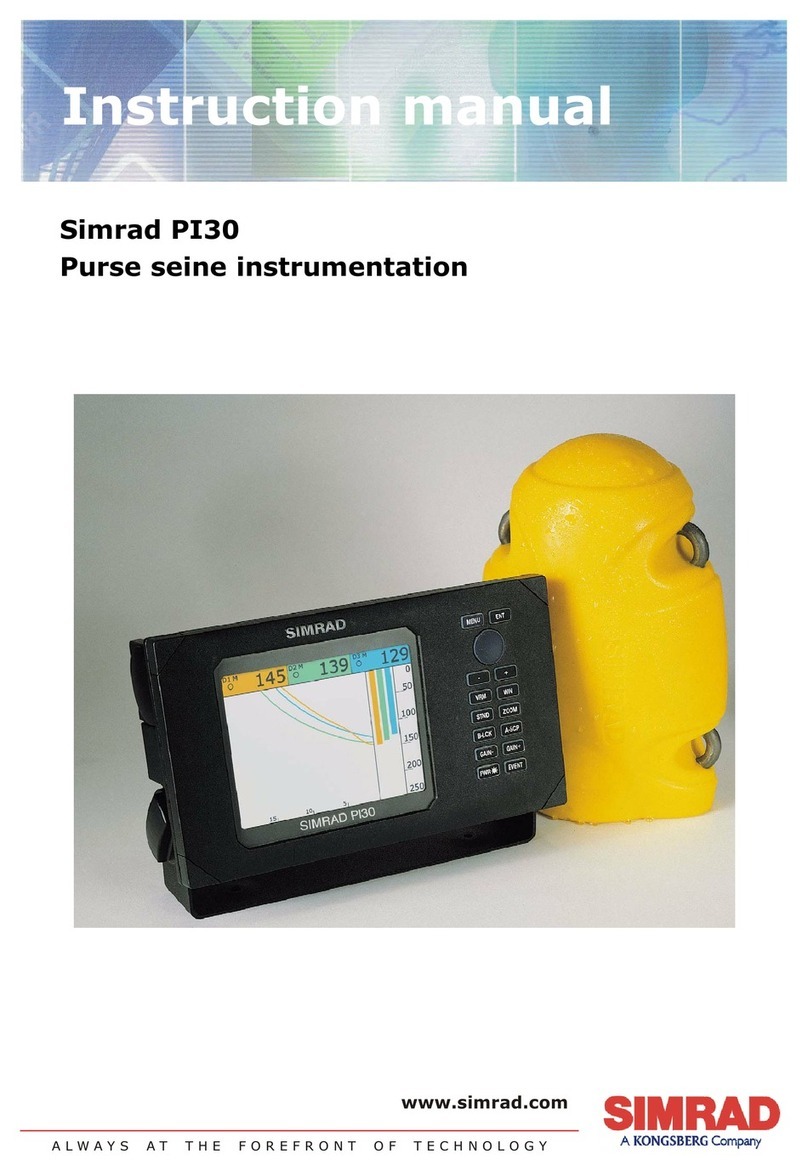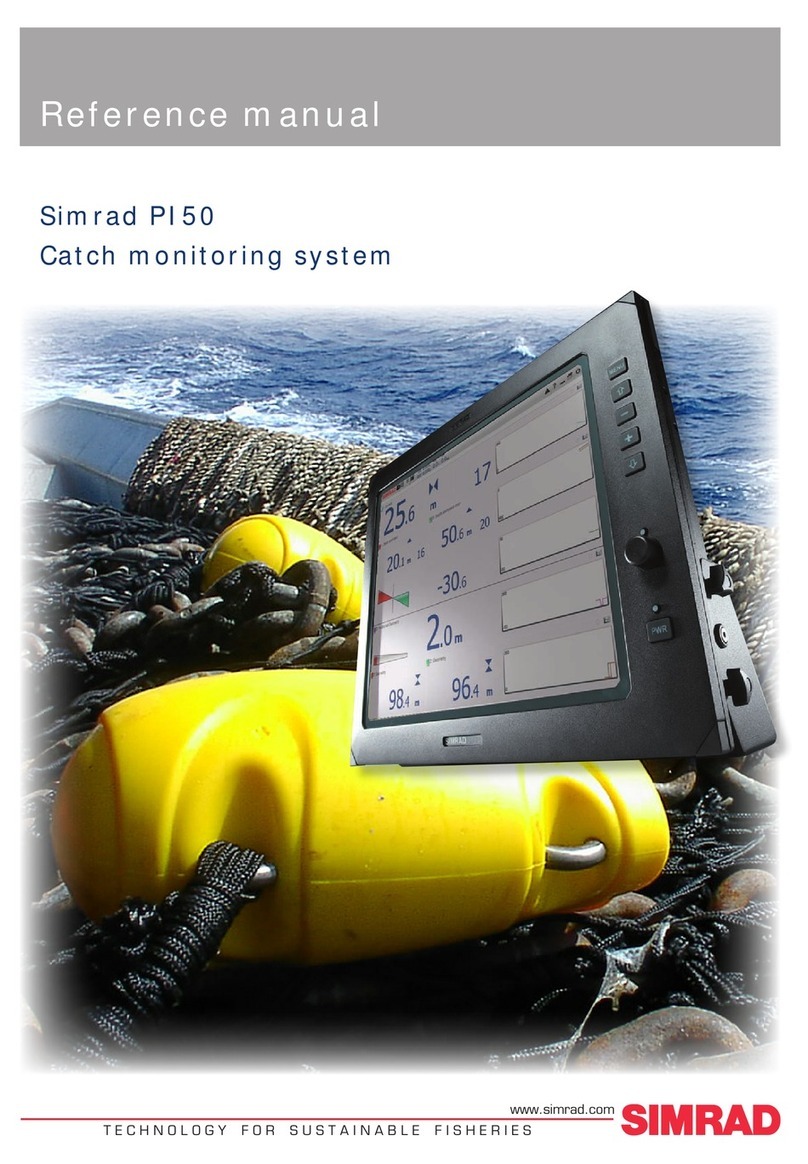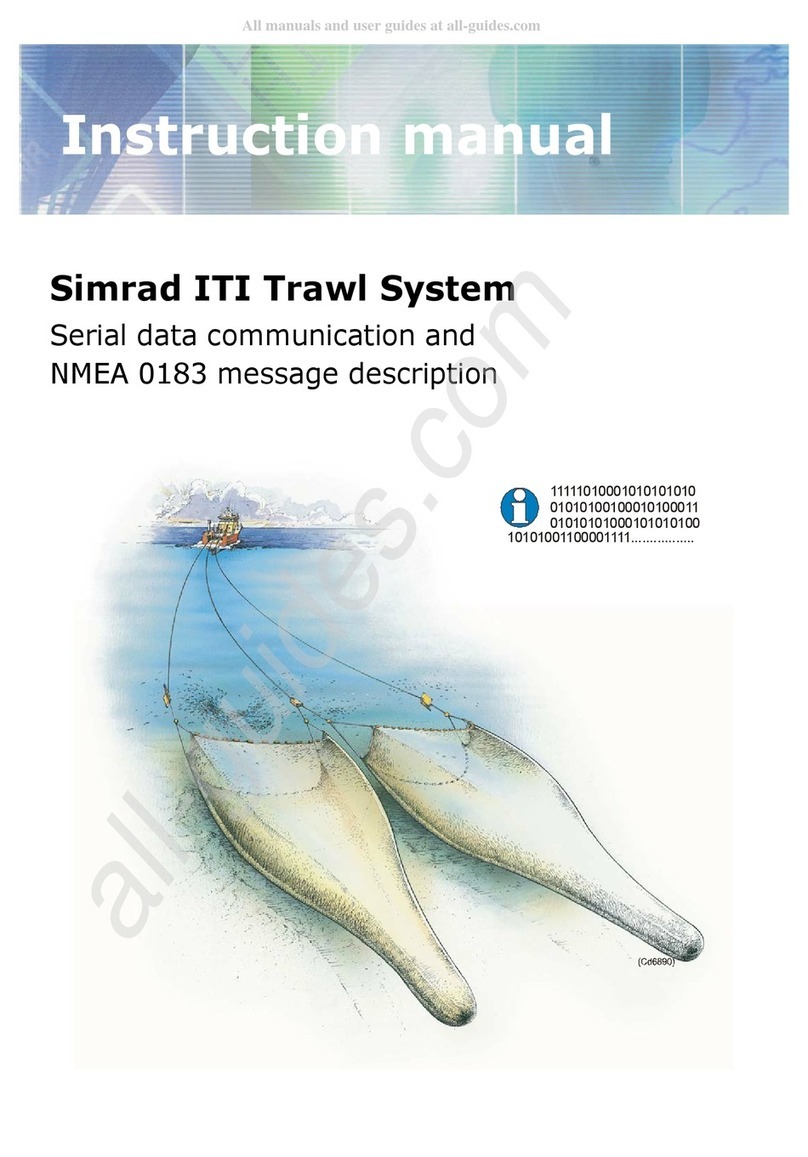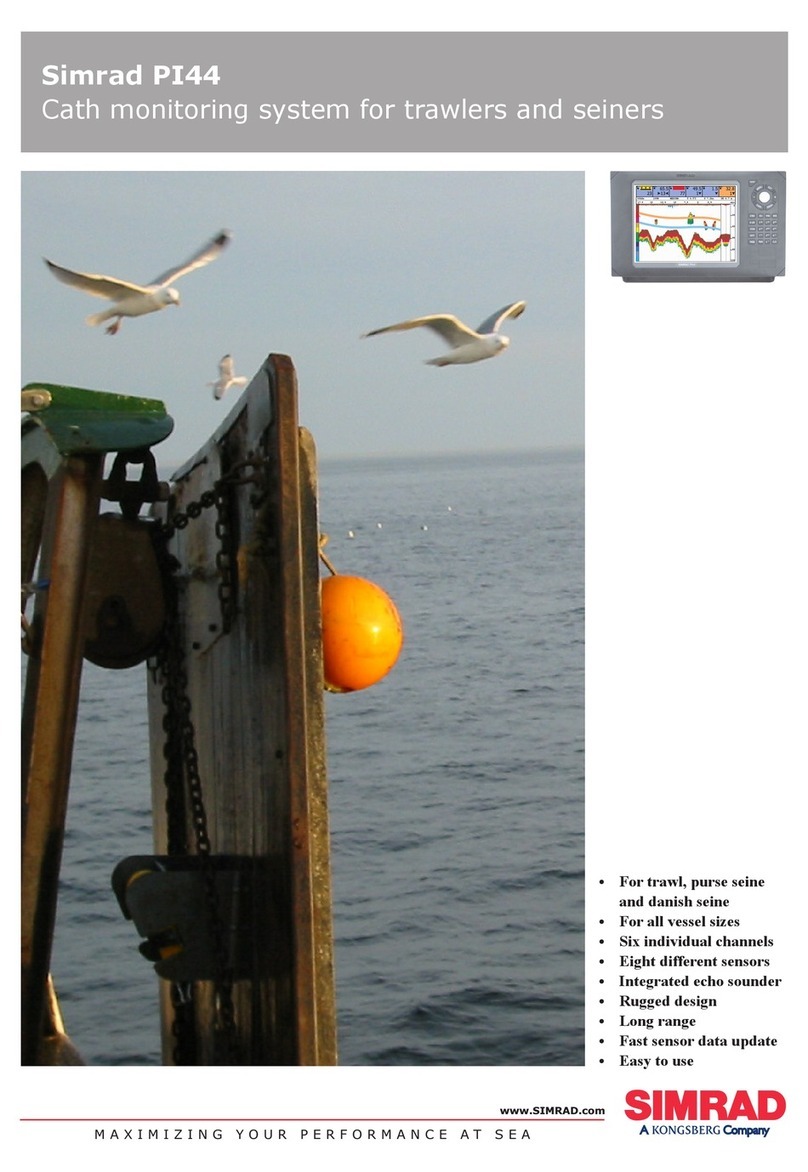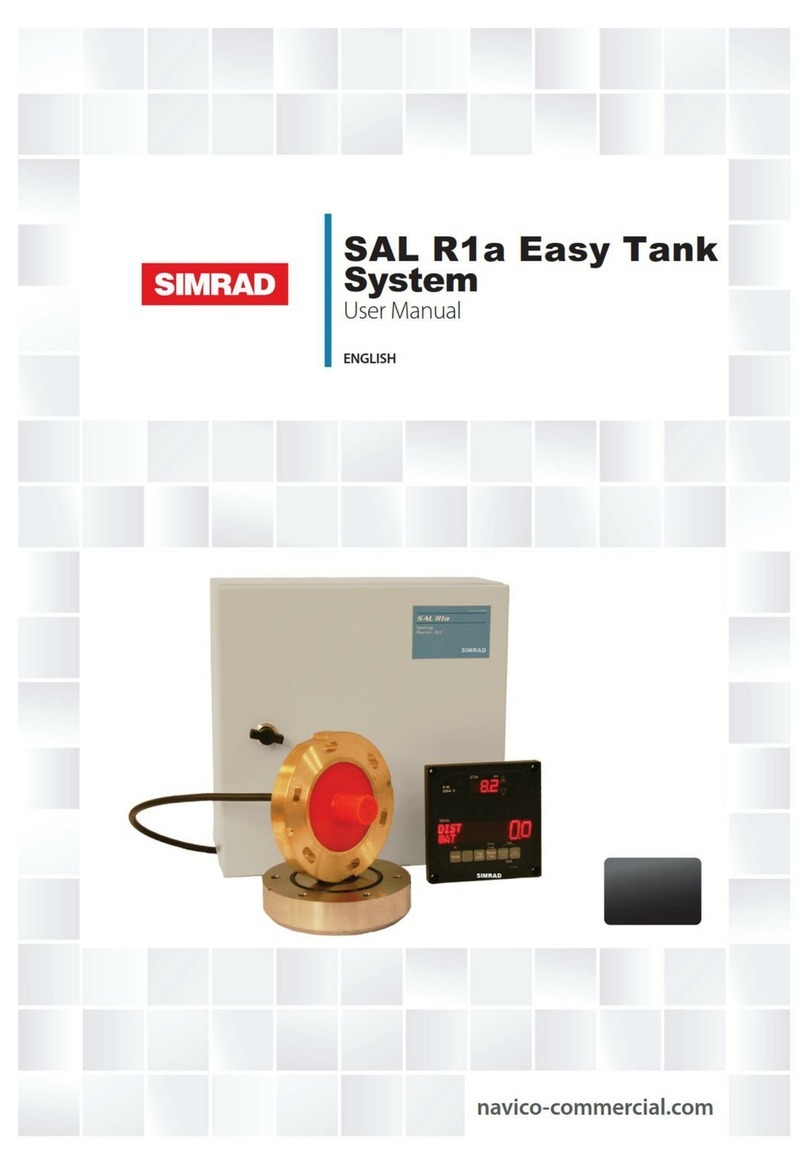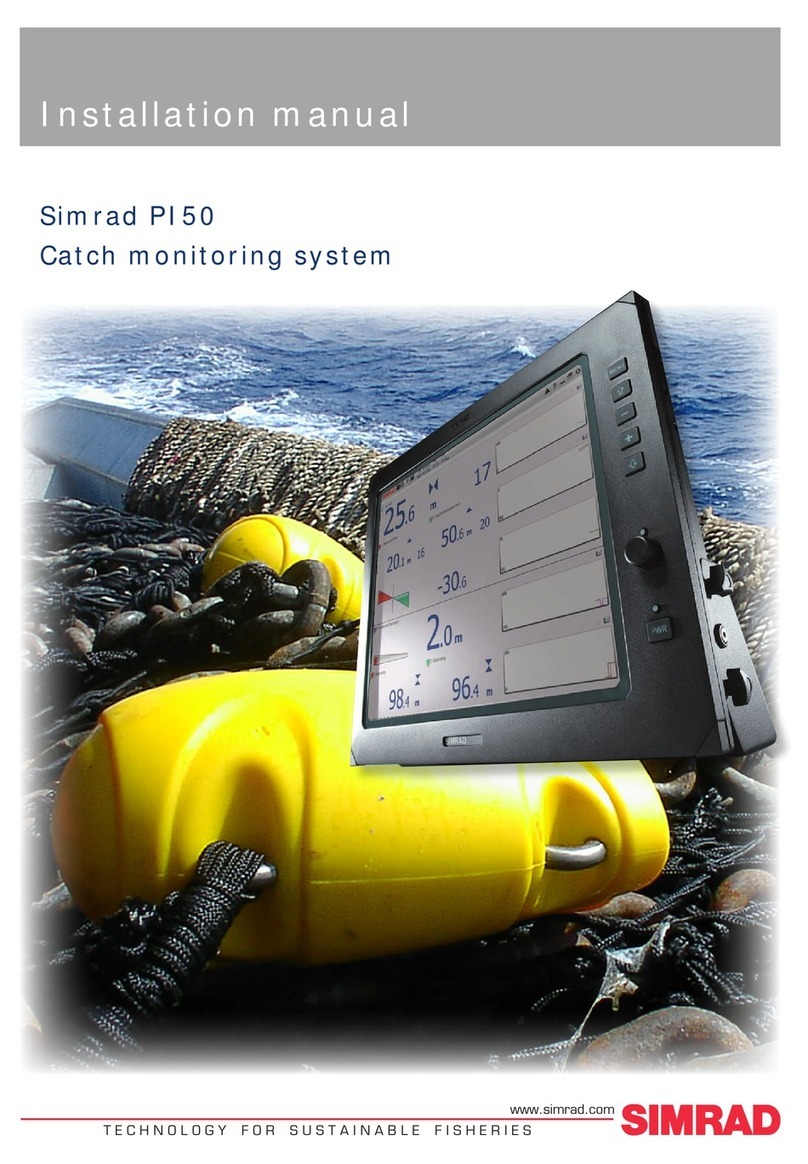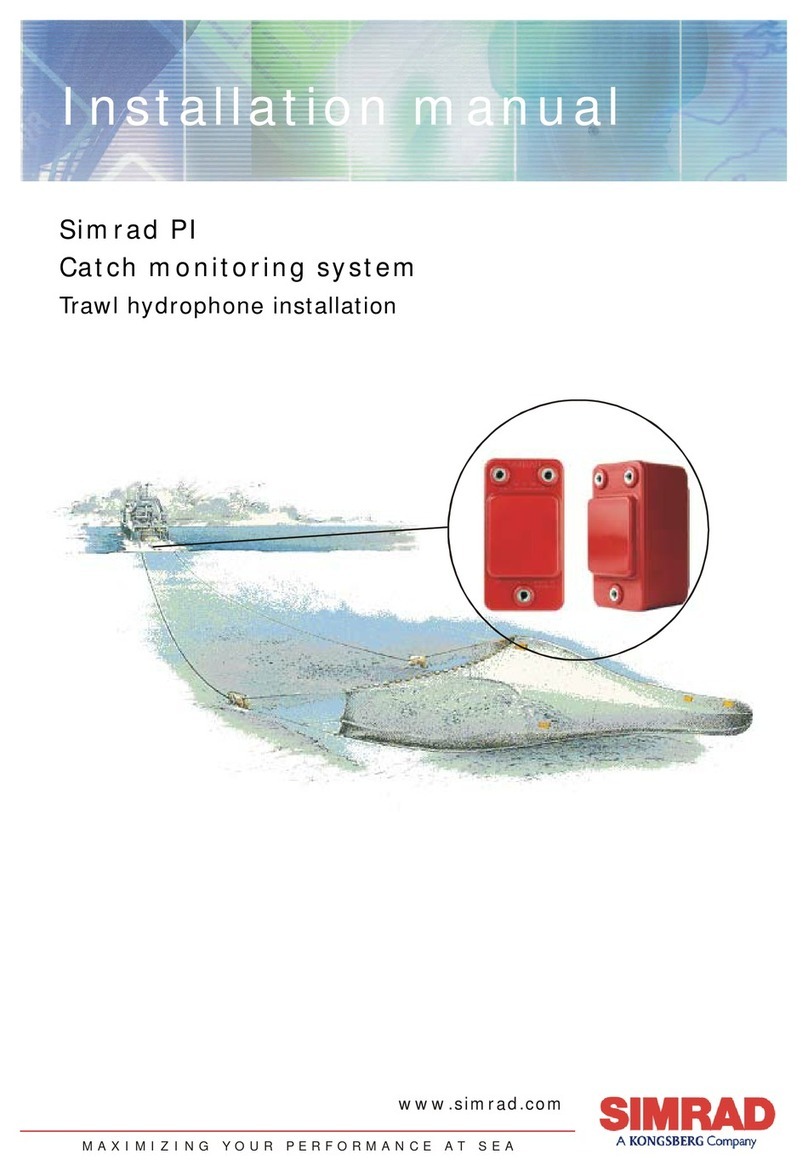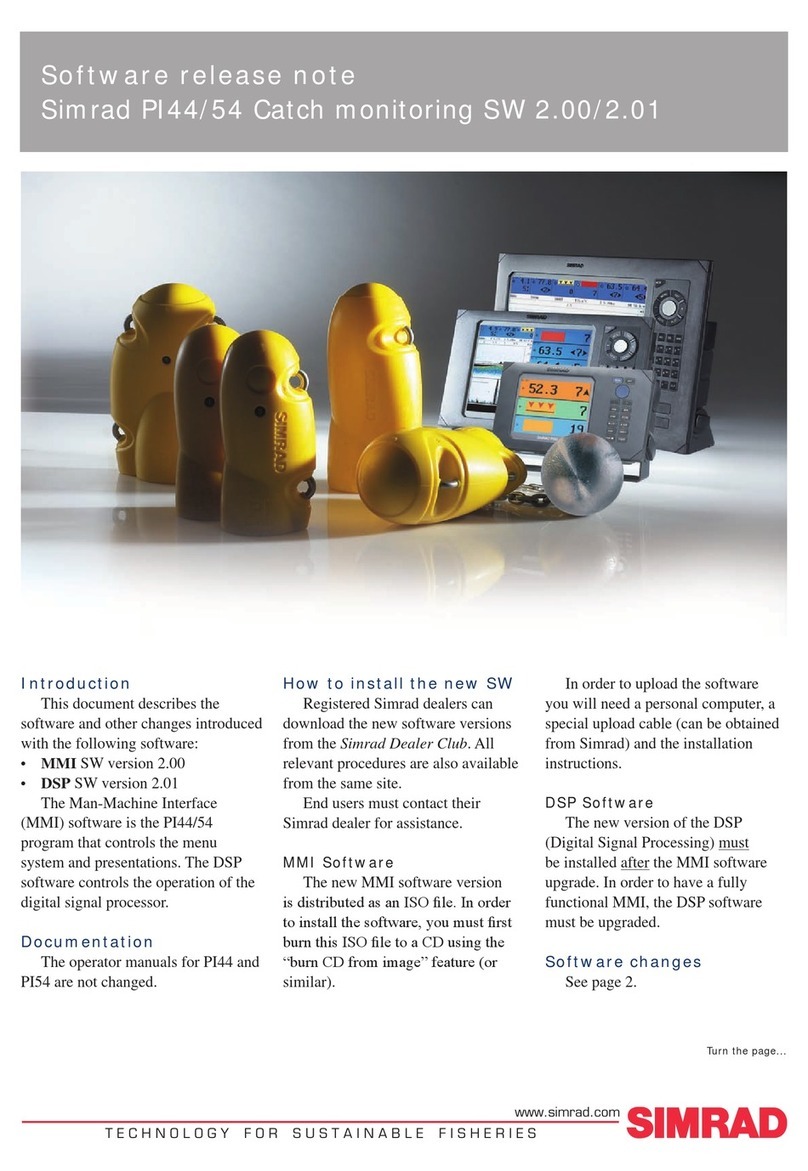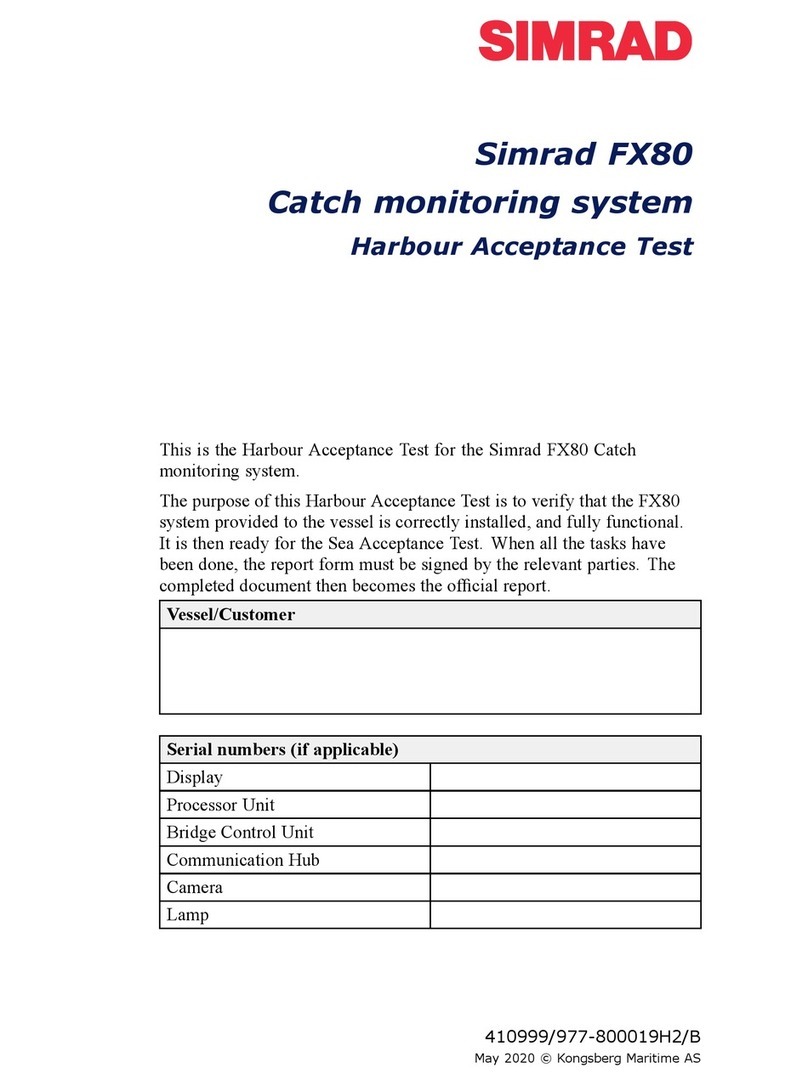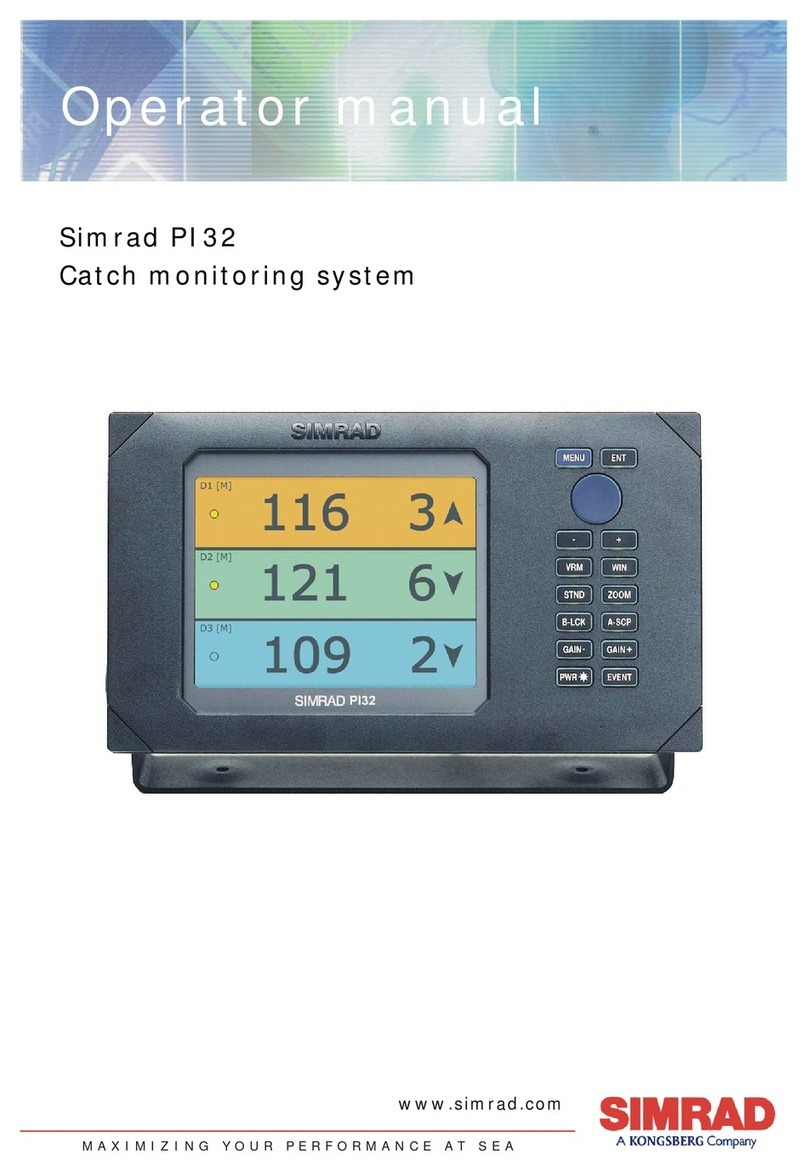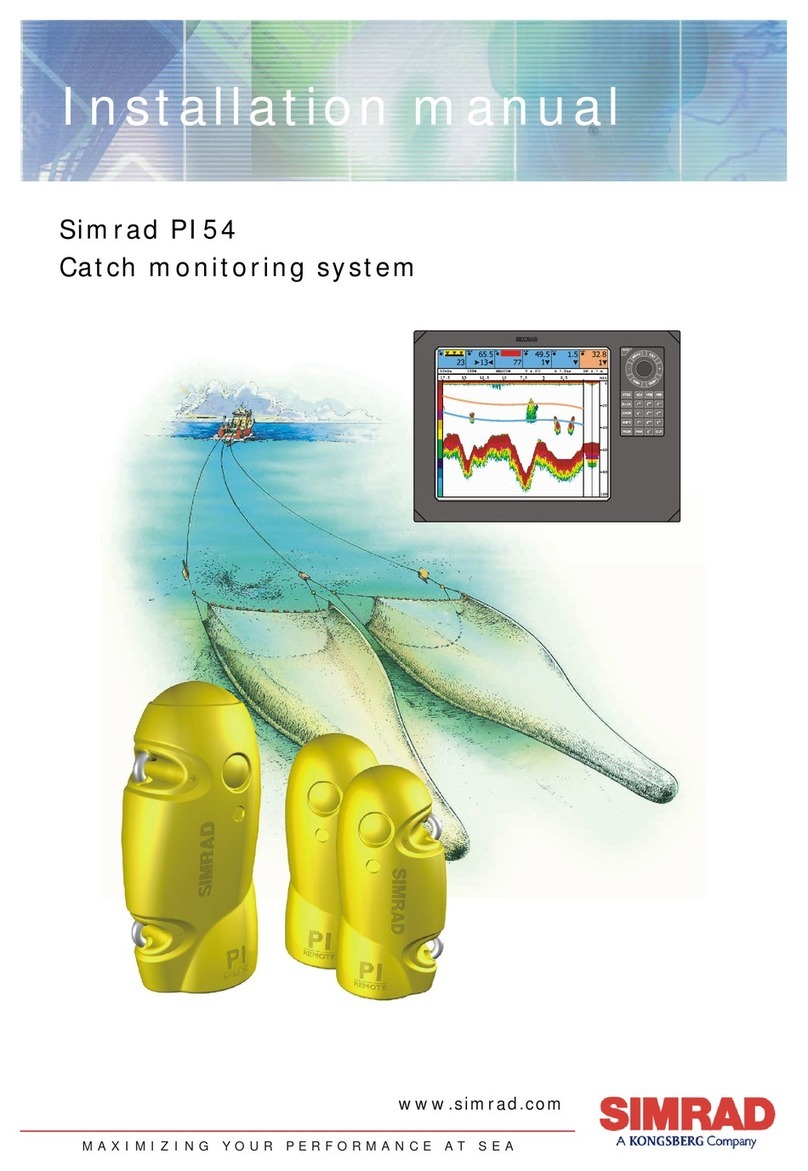Operator manual
V
850-165186 / Rev.B
REFERENCES 173..................................................
Setup map 174..............................................
Depth calibration 176.........................................
Echo presentation setup 177....................................
Echo sounder setup 180.......................................
Factory presets 183..........................................
Graphic setup 184...........................................
Interface setup 187...........................................
Marker line setup 197.........................................
Navigation setup 200.........................................
Numeric setup 202...........................................
Offset adjust 203............................................
Page setup 204..............................................
Palette setup 205............................................
Position display setup 206.....................................
Quick guide 207.............................................
Receiver setup 208...........................................
Sensor alarms 211...........................................
Sensor setup 215............................................
Speed setup 217.............................................
Status setup 218.............................................
Surface temperature setup 219..................................
Temperature setup 220........................................
Trawl calculator 221..........................................
Trawl info setup 223.........................................
Units setup 225..............................................
PI CONFIGURATOR 226..........................................
Purpose 226................................................
Basic information 227........................................
About sensor configuration 229.................................
Main dialogue description 231..................................
Operational procedures 233....................................
References 240..............................................
Maintenance 261............................................
SENSOR TEST PROCEDURES 265.................................
Overview 265...............................................
Bottom Contact test procedure 266..............................
Spread & Remote sensors test procedure 269......................
Catch sensor, test procedure 273................................
